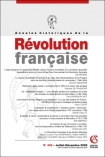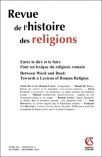
Revue de l'histoire des religions (4/2019)
Pour acheter ce numéro, contactez-nous
Recevez les numéros de l'année en cours et accédez à l'intégralité des articles en ligne.
Pythagore est connu en Islam par un corpus de maximes et d’informations mêlant l’authentique et l’apocryphe. L’article étudie la réactivation de cette figure dans l’Iran shî‛ite du XIe siècle de l’hégire / XVIIe de notre ère, chez les philosophes Mîr Dâmâd (m. 1040/1631), Mullâ Ṣadrâ (m. 1045/1636) et Quṭb al-Dîn Ashkevarî (m. ca 1090/1679). Dans leurs oeuvres, ils se réfèrent fréquemment à Pythagore comme à un sage initié à la source prophétique, un maître de vie philosophique et religieuse, mais aussi un maître de vérité théologique monothéiste. Par l’harmonisation de l’enseignement qui lui est attribué avec le Coran et les ḥadîths des Imâms, ces philosophes repensent à nouveaux frais les questions de l’unicité divine, de la relation entre Dieu et Sa création, de l’âme humaine et de son destin.
Pythagoras is known in Islam through a corpus of maxims as well as through information mixing the authentic and the apocryphal. The article aims to study the reactivation of this figure in 11th / 17th-century Shî‛i Iran, among philosophers such as Mîr Dâmâd (d. 1040/1631), Mullâ Ṣadrâ (d. 1045/1636) and Quṭb al-Dîn Ashkevarî (d. ca 1090/1679). In their works, they frequently refer to Pythagoras as a wise man initiated at the prophetic source, a master of philosophical and religious life, but also a master of monotheistic theological truth. By harmonizing the teaching attributed to him with the Qur’an and the ḥadîths of the Imâms, these philosophers rethink questions concerning divine oneness, the relationship between God and His creation, the human soul and its destiny.

